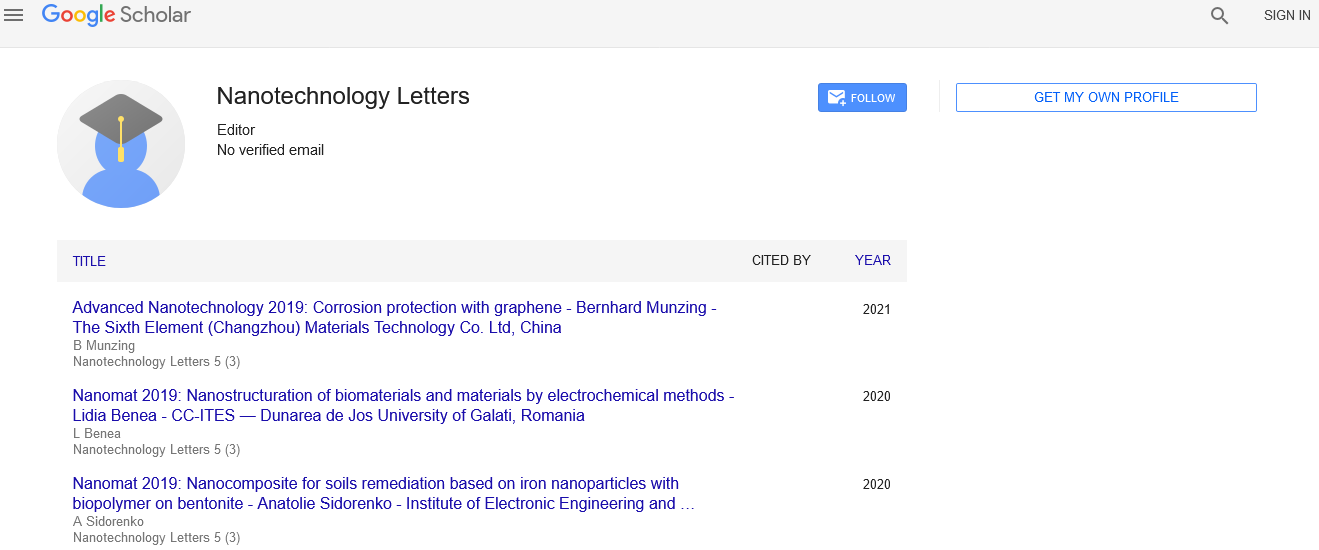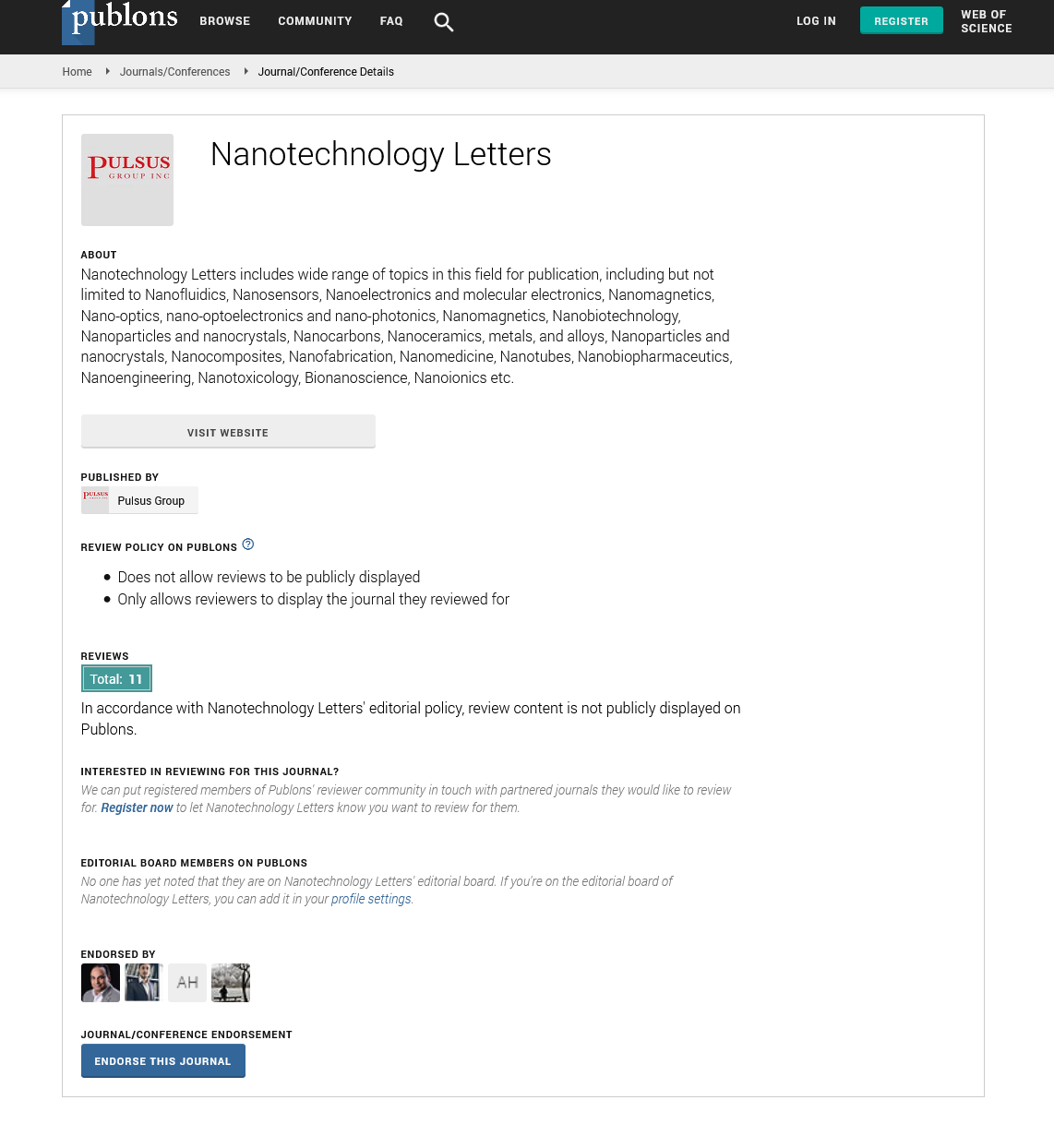
Sign up for email alert when new content gets added: Sign up
Abstract
Nano Congress 2018 & Nano Drug Delivery 2018: Development of novel versatile theranostic platforms based on titanate nanotubes: New safe nanovectors for drugs, plasmid DNA and imaging probes - Nadine Millot-ICB Laboratory UMR 6303 - CNRS, France
Author(s): Nadine MillotThe concept of nanomaterials that can be designed and administered into the human body to improve health is of great interest. During the past years there has been an increasing amount of research on the uses of nanomaterials in diverse areas of biomedical research including biological sensing, labelling, imaging, cell separation and therapy. In this conference, the first evaluation of titanate nanotubes (TiONts) as potential carriers of therapeutic molecules will be presented. Our research group has developed TiONts with controlled parameters from a hydrothermal synthesis and explored biomedical applications over the last decade. These nanotubes are currently elaborated as stable suspensions of nanocarriers by surface chemistry engineering, they can be used as novel transfection agents for cardiomyocytes and we have shown that TiONts are capable of increasing the ionizing effect of radiation therapy in the case of glioblastoma. Furthermore, TiONts’ biodistribution has already been evaluated by SPECT/CT in male Swiss nude mice and TiONts are quickly excreted. More recently we have demonstrated that TiONts-docetaxel (DTX) nanohybrids are versatile nanocarriers in order to limit the systemic toxicity of taxanes and to improve the selectivity of radiotherapy (RT). Our strategy is based on the intraprostatic injection of the TiONts-DTX nanohybrids both in place of brachytherapy and in combination with RT. This is achieved by taking advantage of the TiONts morphology as well as their radiosensitization effect and by associating them with docetaxel molecules, also recognized for their potential to radiosensitization. We also grafted the surface of TiONts with gold nanoparticles, for a resulting combined radiosensitizing effect. Biodistribution kinetics showed that more than 70% of nanohybrids were localized into tumors 96 hours after injection. Mice receiving nanohybrid-RT exhibited a significant tumor growth delay compared to mice receiving free DTX-RT. The elaboration of nanohybrid materials, intended for drug delivery systems, based on TiONts coated with chitosan polymer has also been evaluated. Such nanotubes are combined with transresveratrol derivatives for their anti-oxidizing and antitumor effects.





